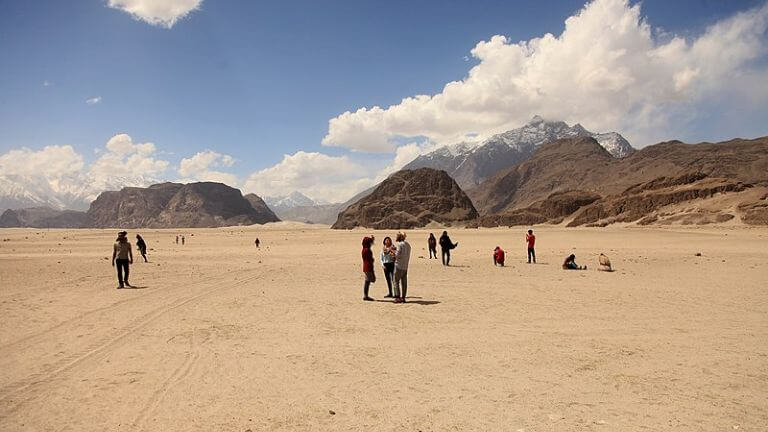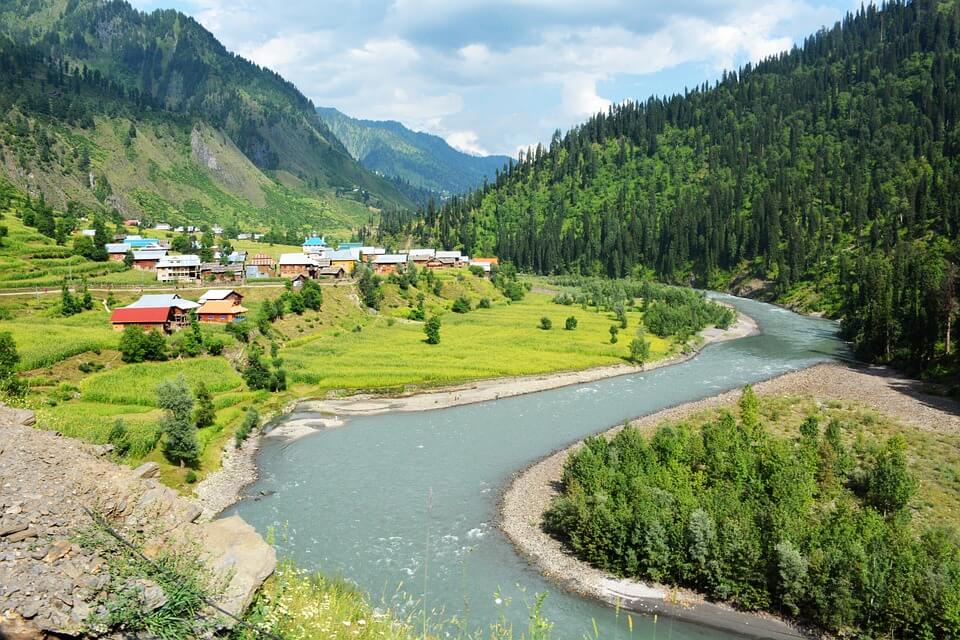How Many Deserts in Pakistan, Exploring The Deserts of Pakistan
From magnificent lakes to mountain ranges and beautiful deserts, Pakistan is full of natural beauty. Usually, people in Pakistan talk about Pakistan’s mountains and lakes, but they rarely talk about its deserts.
Despite the fact that Pakistan’s deserts are not well-known throughout the world. still, some true nature lovers want to explore the natural beauty of deserts.
Unlike Pakistan’s other natural wonders, deserts offer a unique and attractive landscape. The deserts of Pakistan are characterised by their vast expanses of sand dunes, unique geology, and rich cultural heritage.
What is desert?
Many people consider the desert as a sandy, warm place. However, this is incorrect; a desert is defined as a location that receives less than 10 inches of rain per year.
If you believe that deserts are lifeless, so you need to know that numerous species have evolved in unique ways of living in the harsh environments of deserts. Many plant and animal species that have evolved to dry conditions can live in deserts.
Deserts cover nearly one-fifth of the Earth’s land area and they are found on all continents. Deserts in Pakistan are well known for their mysterious properties.
Deserts cover around 10% of Pakistan’s land, with some of the most well-known ones being the ‘’Thar’’ Desert in Sindh, the ‘’Cholistan’’ Desert in Punjab Bhawalpur, the ‘’Thal’’ Desert in Punjab Bhakkar, the ‘’Khushab Kharan’’ Desert in Baluchistan, and the ‘’Katpana Cold’’ Desert in Gilgit Baltistan.
There is a list of deserts in Pakistan. Let’s explore the top 5 deserts of Pakistan.
The Cholistan Desert
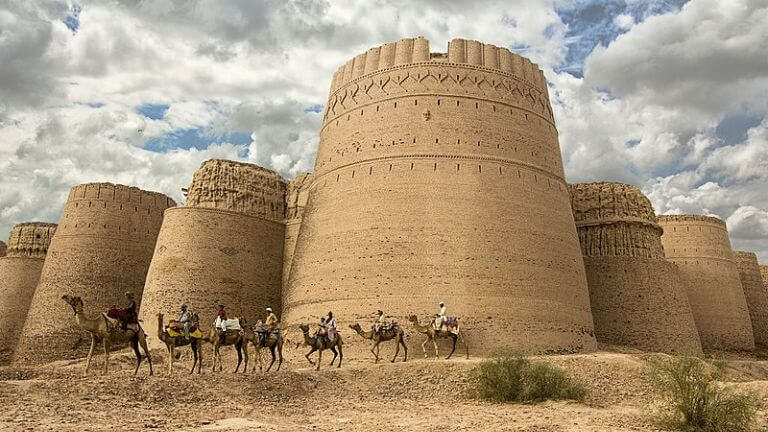
The Cholistan Desert, also known as Rohi, is a significant desert in Pakistan that covers an area of 25,800 km in the Bahawalpur, Bahawalnagar, and Rahim Yar Khan districts of southern Punjab. the Bahawalpur region.
It has a tropical desert environment that is dry and semi-dry with very little humidity. Cholistan receives 180mm of rain on average each year, with July and August being the wettest months. This desert was once a fertile area, receiving water from the Himalayan mountains.
Cholistan is divided into two parts Greater Cholistan and Lesser Cholistan. According to the 2015 estimate, the population of this desert is 229,071, with 70% living in Lesser Cholistan. Greater Cholistan is a more developed part of the desert and is home to various villages and small towns, while Lesser Cholistan is far less developed and is mostly inhabited by nomadic communities.
Cholistanis have a rich cultural heritage and are well-known for their skill in ancient arts and crafts like weaving and pottery creation, despite their difficult living conditions. In addition, they have a long history of farming livestock, and they have created a unique nomadic lifestyle that is adapted to the harsh desert climate.
Camels in Cholistan
Camels play an important role in the lives of the people of Cholistan, serving not just as a mode of transportation but also as a source of food, revenue, and entertainment. Cholistan is home to two separate species of camels: Marrecha and Mahra camels.
Camels provide food, milk, and other useful products like skin and wool. Camel wool and skin are used to create a variety of goods, such as leather goods and textiles. Camel milk is a staple in the nomadic diet, due to its high nutritional value makes it an important source of sustenance in the desert.
They also used camels for their entertainment, such as dancing and racing. Camel racing is a popular sport and source of entertainment in Cholistan, and races are held regularly, attracting large crowds of spectators. The camels are trained for years to participate in these races, and owners take great pride in their animals’ performance.
Facts About Cholistan Desert
The Cholistan Desert is approximately 480 kilometres long and covers an area of around 26,000 square kilometres in the Pakistani province of Punjab.
81% of the desert is comprised of sandy terrain, while the other 19% is characterized by alluvial flats and tiny sandy dunes. The sandy terrain of Cholistan is dotted with a few minor hillocks and rocky outcroppings, but the landscape is primarily flat and featureless.
Animal rearing, especially the breeding and care of camels, cattle, and sheep, forms the backbone of the Cholistan economy.
The production of carpet wool and leather goods are two significant cottage economies in Cholistan. The wool produced in Cholistan is highly prized for its superior quality and is used to make expensive carpets and rugs.
Cholistan was formed during the Pleistocene period. The region developed into a hub for caravan trade, which prompted the construction of an extensive network of forts in the medieval period.
The creation of the Cholistan Desert is believed to have occurred during the Pleistocene period, a geological period that spanned from around 2.6 million to 11,700 years ago.
The sand dunes in the Cholistan Desert can reach impressive heights, with some dunes towering over 100 meters. However, despite its cultural importance, Cholistan is still one of the most underdeveloped regions in Pakistan.
The Thar Desert
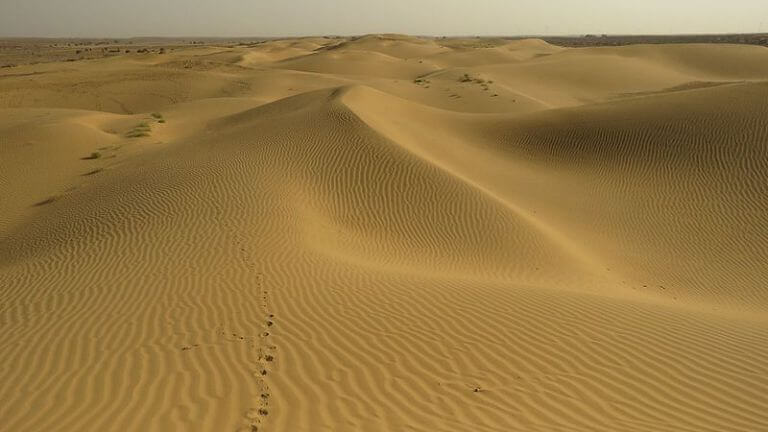
The Thar Desert is situated between Pakistan and India, and it is one of the largest deserts in the world. The desert is known for its rich cultural history, extraordinary wildlife, interesting geography and local populations.
The Thar Desert is Pakistan’s largest desert. India has the majority part of the desert. The Thar desert covers an area of around 200,000 square kilometres and is mostly located in northwest India. Around 85% of the desert is in India and the remaining 15% is in Pakistan.
In Pakistan, the Thar Desert spreads over the provinces of Punjab and Sindh, starting from Tharparkar District in the east. In India, it extends over the state of Rajasthan as well as the states of Gujarat, Punjab, and Haryana.
If you know about Provinces of Pakistan
The Thar Desert is home to a significant number of people, estimated to be over 30 million, which makes it one of the most populated deserts in the world. The people residing in the Thar Desert belong to different religions, including Islam and Hinduism, and have a rich cultural heritage. The primary source of livelihood for the people in the Thar Desert is animal farming and agriculture.
Wild Life in Thar Desert
The Thar Desert is also home to the most unique wildlife species, including many rarest animals that are not found anywhere else in the world like Blackbuck, Chinkara, Bishnois and red fox. Some usually found species include desert hares, desert cats, sandgrouse and desert foxes. Several reptile species are also found in the Thar desert, including cobras, vipers and monitor lizards.
Migratory birds use the Thar Desert as a wintering area, making it a crucial rest point on their long migration routes. It is vital to preserve and safeguard this unique ecosystem since the Thar Desert serves as a key home for many vulnerable and endangered species.
In recent study proves that the plant of Thar can be used for medical purposes.
Festival In Thar
The Thar Desert festival is a cultural event celebrated annually in the region. One of the most famous desert events was organized during the winter. The festival is held to showcase the rich cultural heritage of the region and promote tourism.
During this festival, locals take part in a variety of activities, such as camel racing, puppeteers, acrobats, and folk dance and music performers. The Thar Desert Festival is a major event for the people and provides a platform for the celebration of their traditions.
Thal Desert

The Thal Desert is located in the Bhakkar district of Punjab, in northern Pakistan. It covers an area of around 10,000 km² and has a semi-arid climate, with hot summers and cold winters. The population, which is spread out among a few tiny communities around the desert, relies mostly on agriculture and animal husbandry for their survival.
The Thal Desert is famous for its unique sand dunes, scanty rainfall, high diurnal variation of temperature and high wind velocity and rock formations, as well as its rich cultural heritage and nomadic lifestyle.
The region is home to various communities, including the Tiwana, Sial, Mammak, Bhachar, Baghoor, Rahdari, and Jhammat peoples. The population lives in scattered settlements and most farmers have less than 5 acres of land, which is challenging to cultivate. Despite these challenges, people still live in the Thal Desert and have developed unique ways of adapting to its harsh conditions.
Sand Dunes of Thal Desert
As we mentioned earlier the Thal desert is famous for its unique sand dunes, Half of the Thal desert is covered with sand dunes. Sand dunes can reach heights of up to 300 meters and are constantly shifting, making the landscape ever-changing.
The sand dunes provide a habitat for a variety of plants and animal species and are a significant part of the ecosystem of the Thal Desert. Sand dunes crucial part of the region’s natural and cultural heritage, and they continue to draw interest from visitors and geologists.
The Greater Thal canal
The greater Thal canal is an irrigation canal system in the Thal desert region. The main purpose of this project is to help increase agricultural production and improve livelihoods. The Project was built to provide irrigation water to the arid and semi-arid lands of the region.
The Thal Canal Project’s history began in 1873 when the idea for the project was initially developed for the entire Thal Doab. Water is distributed throughout the Thal desert by the canal system, which collects water from the Indus River. The Project has made an important contribution to the local economy and has assisted in supplying much-needed water for drinking, agriculture, and other uses.
Facts About Thal Desert
Livestock skins and milk production are the region’s two primary sources of revenue. A major source of income for the locals is milk production, which explains why cows and buffaloes are raised more frequently than camels or goats. Skins from animals like sheep and camels are used to make leather goods, while teeth and bones are used to make items like buttons, jewellery, and decoration.
Approximately 50% of the region sees hyper-arid climatic conditions. The Thal desert is deficient in resources and infrastructure with very limited health services, schools, or other public utilities like water or power. The closest hospital that can provide treatment is generally great distances away.
Kharan Desert
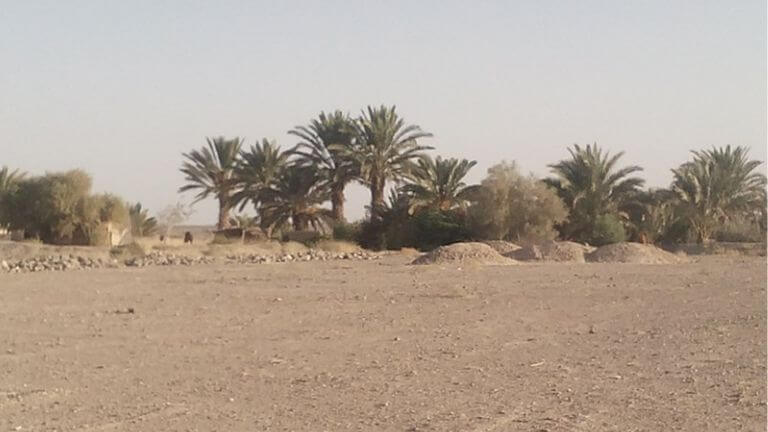
The Kharan Desert is a sandy and mountainous desert that can be found in Pakistan’s Balochistan province. It occupies a region of around 17,000 square kilometres and is located southeast of Quetta. High plateaus and mountains around the desert, make it challenging for humans to live there.
The desert has a population of only 0.23 million and is famous for its ancient forts and tombs. The desert’s landscape is stony, dry, and dotted with bushes and tiny trees. Only a few communities of nomadic herders and farmers managed to survive in the harsh conditions. Despite the difficulties, some tribes have managed to retain their ancient way of life.
Wildlife of Kharan Desert
Despite the harsh conditions, there are still a few species of plants and animals that have adapted to life in the Kharan desert. Some of them include Desert hares, also known as desert jackrabbits, gazelles, Saw-scaled Viper and Salvadora persica.
Facts About Kharan Desert
The Kharan Desert is a centre for criminal operations including drug trafficking, smuggling, and militant poaching due to its isolation and hard climate.
The terrain of this desert is mainly dry, grey-brown sand that stretches out. The area cannot be used for agriculture due to low irrigation. It is suggested that Alexander the Great travelled this region through the famous Khyber Pass.
On May 30, 1998, Pakistan conducted its second nuclear test, known as Chagai-II, in this desert.
Cold Desert, Skardu (Katpana Desert)
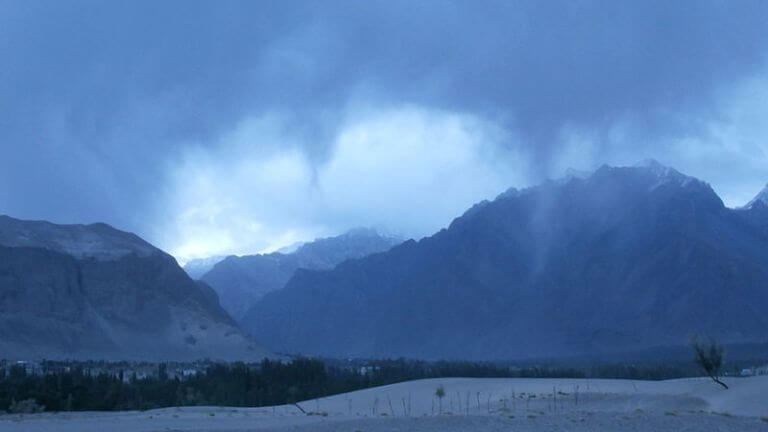
The Katpana Deser also known for the cold desert is located in the northern region of Pakistan and is part of the large Karakoram mountain range. It is a high-altitude desert known for its extremely cold temperatures and limited rainfall.
The desert is located in the Skardu region. The desert is famous for its unique sand dunes that are sometimes covered in snow during winter, sand dunes of this desert are up to 150 meters in height. Katpana is situated at an elevation of around 2,226 meters above sea level and some time temperature of this desert is dropping as low as -18°C in the winter months.
Life in Cold Desert
The Katpana Desert is home to a variety of plants and animals, including various varieties of shrubs, grasses, and desert creatures like the sand gazelle and the Asiatic cheetah. This is true despite the harsh climatic conditions some species still live in this desert but the number of these species is limited, because of the difficult living conditions.
Tourists in Katpana Desert
The Katpana Desert has recently gained popularity as a travel destination for adventure seekers and environment lovers. Sandboarding, camel riding, and experiencing the natural beauty of the desert and its neighbouring mountains are among the activities available for visitors.
Overall, Pakistan’s Katpana Desert is a significant natural and cultural landmark, and anybody interested in learning more about the natural beauty and cultural variety of this fascinating country should visit this desert.
Conclusion
Despite their importance, the deserts of Pakistan are usually ignored and underappreciated compared to the country’s other natural wonders. By raising awareness about these ecosystems and highlighting their beauty and importance, more people can appreciate and protect these unique landscapes for future generations.

